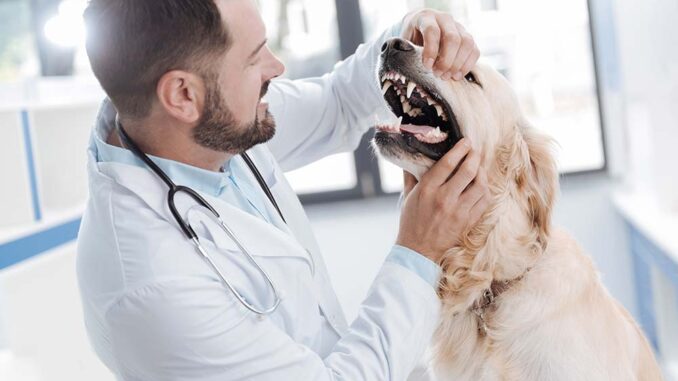
This article was updated on January 20th, 2024
If you look into your dog’s mouth and examine their teeth, you might be concerned if you see black spots on them. There are a number of reasons that a dog may have black spots on their teeth. Cavities (dental caries) are possible but are much less common in dogs compared to humans. More commonly, you are seeing discolored tartar, attrition, and abrasion, or pulpitis. Let’s review the top causes, with pictures:
1. Discolored tartar can turn black
Tartar can turn black as shown on the images below:
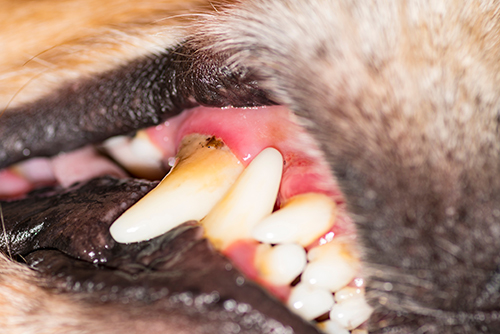
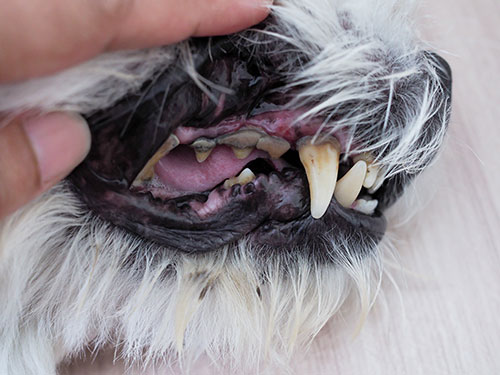
When your dog eats, the food mixes with bacteria that are found in the mouth and forms a sticky film known as plaque. With time, the plaque hardens and becomes tartar. Because dogs rarely brush their teeth in a timely fashion, tartar buildup can occur quite rapidly and result in black spots on the crown of the teeth.
Tartar buildup needs to be addressed: tartar accumulation can cause dental disease, which can lead to tooth decay, gum inflammation, and other health issues if left untreated. Learn how to remove tartar or find out about low-cost dental cleaning options.
2. Abrasion can create black spots
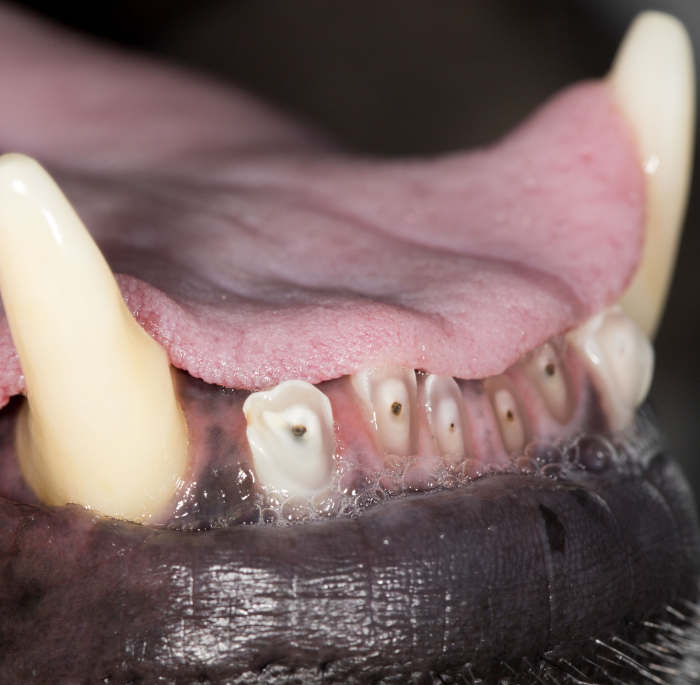
Dogs that chew on inanimate objects often (toys, balls, bones, fences, cages) or who play games such as fetch with balls or frisbees, are likely to have signs of abrasion on their teeth.
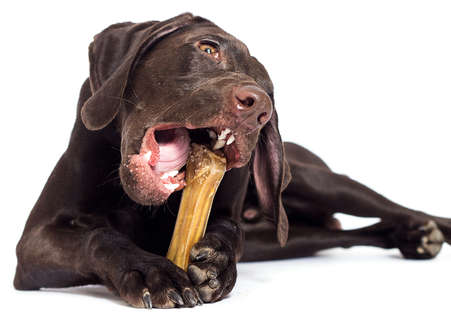
Abrasion of your dog’s teeth is a wearing down of the top layer of the tooth, the enamel: affected teeth will become shorter and often flat on top, and there will be a small black spot in the center where the pulp cavity is exposed. The pulp cavity contains the inner components of the tooth, the nerve, and the blood vessels.
The tooth may be more prone to root infection and should therefore have regular examinations. To properly evaluate abraded teeth, the dog will require a thorough examination under general anesthesia, including periodontal probing and x-rays. Teeth found to be diseased may require either restorative treatment via root canal and crowning, or extraction.
3. Cavities (dental caries)
Cavities are possible in dogs, though due to their relatively sugar free diet and lack of flat occlusal surfaces, they are rare. Cavities occur when the enamel on the outside of the tooth is worn away or has an erosion in it due to bacterial invasion.

Though sugar itself isn’t causing the cavities, it feeds and allows the bacteria that cause cavities to proliferate on the teeth. If your dog eats human food with sugar in it (cookies, cakes, bread), they are more prone to cavities.
A cavity will need to be assessed by your dog’s veterinarian. Treatment consists of removing the damaged area of the tooth and then placing a filling. In some cases, the entire tooth will require extraction.
4. Pulpitis can result in tooth discoloration (including black spots)
If the tooth itself has an area of discoloration, the dog may have injured the tooth, and the pulp inside is severely damaged or dying. This is an extremely painful condition and should be addressed as soon as possible. These teeth may turn black just at the tip (as shown on the picture below), or the entire tooth may be affected.
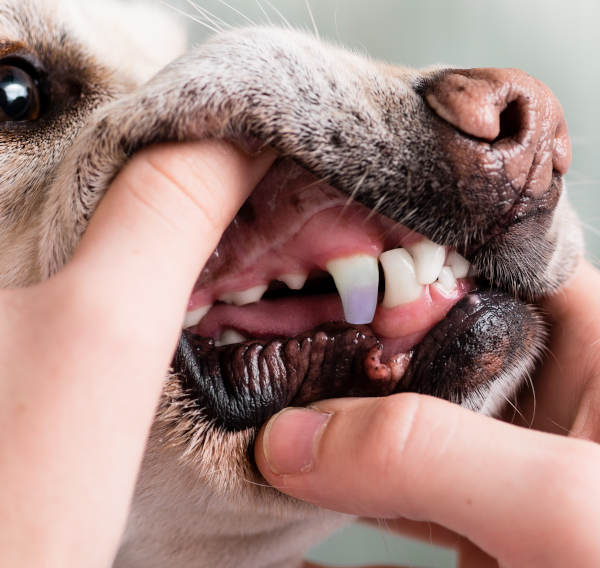
A root canal with crown restoration is the preferred treatment option, but extracting the tooth is curative as well. These teeth are dead and, if left untreated, can be a source of chronic mouth pain as well as a site for abscess formation.
Dogs may be in pain even though they are quite adept at concealing it
Dogs with black spots on their teeth may be experiencing pain, but since they cannot communicate this to us verbally, it may go unnoticed. Dr. Whittenburg explains:
“A dog can have a very diseased and painful tooth and show no outward signs. I am constantly amazed by the level of dental disease some dogs deal with without showing signs. This does not mean they are not in pain!”
In severe cases of dental disease, the owner may see any of the following signs of pain:
- a reluctance to eat hard food,
- dropping food from the mouth, and
- drooling.
Diagnosis and treatment of black spots on dog teeth
Dental disease is extremely common in dogs, and by the time they are 3 years old, about 75-80% of dogs will be suffering from periodontal disease. If you notice black spots on your dog’s teeth, you should make an appointment for them with your veterinarian as soon as possible.
To diagnose and treat the issue, your dog may require a dental cleaning and exam, with dental x-rays, under general anesthesia. At this time, your veterinarian may be able to treat the tooth, or they may refer you to a board-certified veterinary dentist.
Learn more about common dog teeth problems (with pictures).
Disclaimer: This website's content is not a substitute for veterinary care. Always consult with your veterinarian for healthcare decisions. Read More.



Be the first to comment